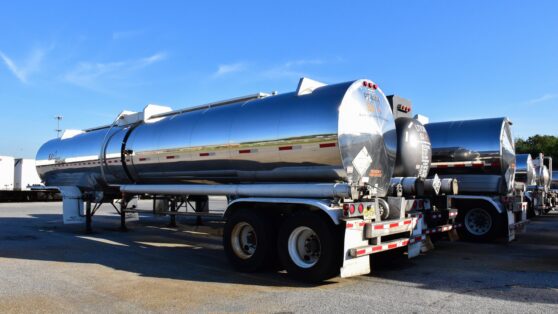According to the latest data and statistics, the trucking industry’s fleet managers predict and plan. Computing for your odds, how much managers can save and spend, and your chances of increasing profits rely on the current industry numbers. Apart from driving growth, what does a fleet manager do at a trucking company? Their management also focuses on reducing unwanted costs, labor safety, and cost-effective decisions.
If you’re wondering how you manage a fleet truck, look no further than here for all the relevant statistics and industry trends you and your managers need to plan for the coming year.
Fleet Management Statistics and Trucking Industry Facts
According to the American Trucking Associations (ATA)’s truck facts, the number of fleet vehicles in the US is around 37.9 million trucks registered for business purposes in 2019. This number did not include the trucks used by the government and for farms. Out of the 276 million registered vehicles in the US, 13.7% were trucks. In 2019, 12 million units of light trucks were sold in the US. In terms of companies, the US Department of Transportation reports that they had 996,894 for-hire carriers on file as of February 2021. The Federal Motor Carrier Safety Administration (FMCSA) totaled 813,440 private carriers in the same month.
It’s no surprise that fleet carriers are responsible for billions of nationwide profits. Gross freight revenues from trucking’s primary shipments totaled $732.3 billion, which is 80.4% of the country’s 2020 freight bill. The trucking industry’s total revenue totaled $791.7 billion in 2019.
Transportation Statistics
Companies invest in trucks because of the large distances from one continent to another. Trucks covered billions of miles in 2019 alone. Registered trucks traveled 300.05 billion miles, while combination trucks traveled 175 billion miles. In the same year, business purpose trucks consumed 45.6 billion gallons of fuel. The diesel fuel consumed was 36.5 billion gallons, and gasoline consumed 9.1 billion.
The trucking market is significant, as the industry transports 70% of the country’s goods. Between US and Canada, trucks transported 67.7% of goods in 2019. The ATA also reports that the 11.8 billion tons of goods that travel through highways are valued at $10.4 trillion.
Accident Statistics and Causes
Truck accident statistics are also integral to planning and preparing your driver’s safety training. Despite fewer people driving early in 2020, the National Highway Traffic Safety Administration (NHTSA) estimated that 38,680 people died in motor vehicle traffic crashes. Fewer drivers on the road still resulted in the most significant projected number of fatalities since 2007. In 2019, there were 1.37 deaths per 100 million vehicle miles traveled.
The NHTSA also found that the following crash factors increased in 2020 versus 2019:
- 15% increase on urban interstates
- 11% increase on rural local or collector roads
- 9% increase during weekends
- 11% increase at nighttime
Fatalities increased in the rural areas from March to December, with a 7% increase in a year from 2019 to 2020. There was also an increase in fatalities during the nighttime, from 6 pm to 5:59 am, and during the weekends from March to December. It is worth noting that deaths in crashes with at least one truck decreased from March to December 2020.
The FMCSA reports the following as the common violations among driving commercial motor vehicles. Fleet managers can consider these the most common cause of accidents from human errors. Account for these in your fleet management statistics to ensure that your upcoming safety program and training covers these mistakes:
- Speeding
- Reckless driving
- Improper turns
- Following too closely
- Failure to yield right of way
- Failure to obey a traffic control device
- Improper lane changes
According to NHTSA data, annual accidents are averaged at 5 million a year. While only 11% of the accidents include trucks, the death toll reported is above 4,000. Accidents compromise a considerable expense for fleet companies. The last time the FMSCA averaged the costs of large trucks was in 2007. Adjusting the numbers according to inflation, today’s average cost would be $120,000. Crashes with tractor-trailers average at $382,000. The cost increases to $4.8 million if fatalities are included. Taking these accidents into account also helps know what fleet maintenance industry trends are relevant to your vehicles.
Final Thoughts
Once you have all the information on US fleet vehicle statistics, you can start implementing programs that help coach drivers to practice safety on the road. Make sure your list of fleet managers has the necessary information. With the help of Netradyne’s technology, driver’s risky behaviors like distracted driving are recorded and alerted to your staff. The cameras also accumulate the fleet driver’s positive behaviors to note their strengths and perform better in the future. Netradyne is your partner in assuring safer roads as your drivers are behind the wheel.







